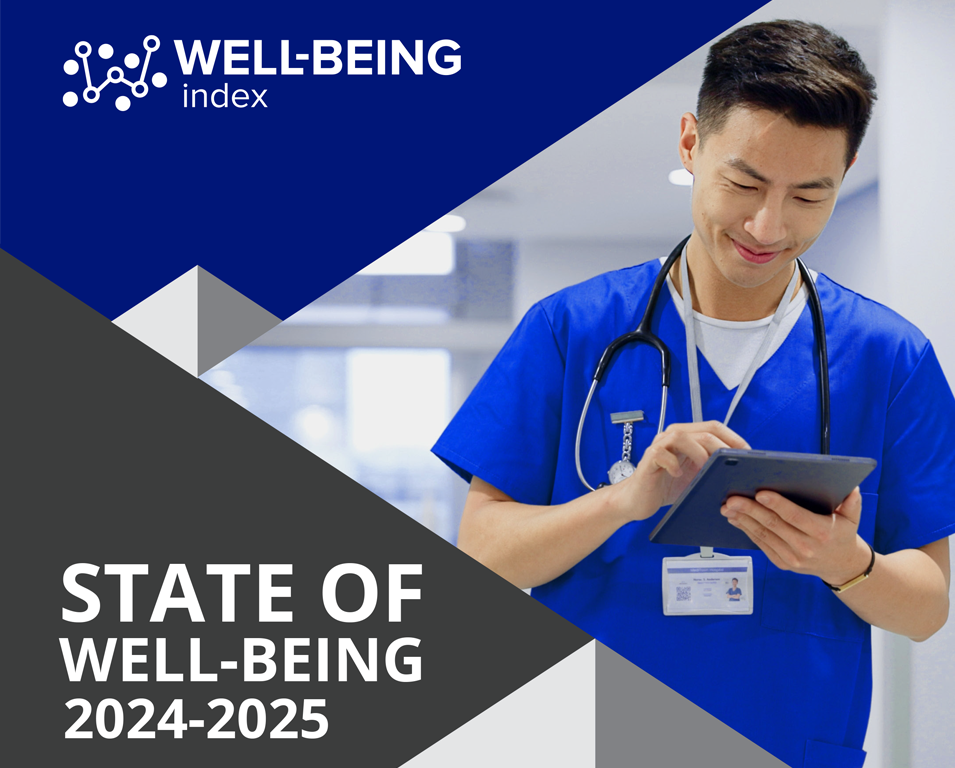Access the State of Well-Being 2024-2025 Report
Your go-to resource for healthcare worker well-being data.
Unlock the Insights Shaping the Future of Healthcare Professional Well-Being
The 2024-2025 State of Well-Being Report is here—and it’s your key to understanding the most pressing trends, risks, and opportunities in healthcare workforce well-being.
As healthcare leaders, you face complex challenges in supporting employee well-being, reducing burnout, and fostering a healthier workplace. This exclusive report provides actionable, data-driven insights from over 97,000 healthcare professional self-assessments, helping you navigate these challenges with confidence.
Why This Report is Essential for Healthcare Leaders
The 2024-2025 State of Well-Being Report is packed with critical findings that will:
- Identify emerging trends in burnout, distress, and mental health risks across the healthcare industry
- Benchmark occupational well-being against the broader healthcare landscape
- Offer strategic insights to guide leadership decisions and improve employee engagement
- Give you a clear roadmap for building a healthier, more supported workforce
What You’ll Get
In this comprehensive report, you’ll gain access to:
- Year-over-year trends in well-being and burnout
- Industry benchmarks across different healthcare sectors
- Actionable insights for fostering a culture of wellness that sticks
Get Instant Access to the Report
Simply fill out the form to receive the full 2024-2025 State of Well-Being Report.
Don’t miss out on this invaluable resource for healthcare leaders.
Ready to make a lasting impact on your workforce?
Transform Your Organization’s Well-Being Strategy
Whether you’re looking to refine your current wellness strategy or develop a new one, the Well-Being Index provides the foundational insights and tools you need to make informed decisions and lead your organization toward better health outcomes.
See how the Well-Being Index can transform your organization’s approach to well-being. Meet with a Solutions Expert to discuss your goals and explore tailored solutions.

